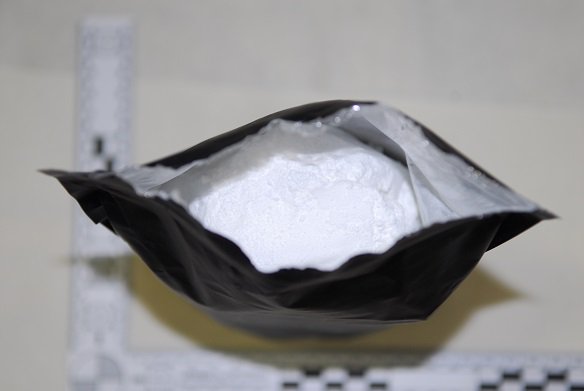
Cocaine hidden in a cocoa bag. AFP and border protection agencies seized approximately 300 kilograms of cocaine imported into Melbourne via air cargo in pallets of cocoa powder in November. Photo: AFP.
Cocaine use in the ACT has climbed to be the second-highest in the country, according to a new report analysing the nation’s wastewater.
The National Wastewater Drug Monitoring Program’s third report, released by the Australian Criminal Investigation Commission, includes wastewater data from all states and territories to August 2017 to paint a picture of national drug use.
The program monitored 54 wastewater sites across the capital city and regional areas covering about 61 per cent of the Australian population or 14.2 million people.
The ACT rated highly in the consumption of several drugs including cocaine, heroin, methylamphetamine (ice) and opioid pain medication oxycodone.
Although cocaine use fell nationally, the ACT bucked the trend to report the second highest capital city average consumption nationally of the high-end drug. Cocaine use remained highest in New South Wales, mainly in Sydney.
“Nevertheless, the scale of cocaine use in Australia remained noticeably lower than methylamphetamine levels,” the report said.
Heroin use was measured for the first time and the ACT reported the second highest estimated capital city average consumption, behind only Victoria.
The ACT was also a big user of oxycodone, with the Territory having the highest capital city average consumption of opiate. Overall, with the exception of regional Northern Territory sites, estimated average consumption of oxycodone in regional and capital city sites decreased between August 2016 and August 2017.
Victoria reported the highest average regional oxycodone consumption.
When it comes to methylamphetamine or ice, the ACT reported a small increase, reflecting a ‘resilient’ demand for the drug nationwide with no substantial decrease in consumption between August 2016 and August 2017.
ACIC Chief Executive Officer Michael Phelan said methylamphetamine continued to be the most prevalent illicit drug consumed in Australia.
“Its use is well known to cause significant harm, and with widespread use across all jurisdictions, methylamphetamine continues to pose significant challenges for the community,” he said.
Along with cocaine, MDMA (ecstasy) use has fallen nationally. “For these two substances, recent significant seizures and detections appear to have contributed substantially to decreased consumption and have constrained the growth of the markets,” Mr Phelan said.
Mr Phelan said that wastewater analysis had identified MDMA consumption as an emerging problem, particularly in regional areas.
He said that although fentanyl and oxycodone use has decreased nationally since August 2016, consumption of these substances remained a concern, particularly in regional areas.
Minister for Justice Michael Keenan said the data from the report would pinpoint targets for law enforcement agencies, with wastewater analysis suggesting that large seizures of illicit drugs in particular areas have had an impact in reducing drug consumption in those markets.
He said that during 2016-17, seizures of cocaine and MDMA increased significantly, with the Australian Federal Police reporting seizures of 3.98 tonnes of cocaine during 2016-17 (up from 709 kilograms in 2015-16) and seizures of 1.28 tonnes of MDMA during the same period (up from 223 kilograms in 2015–16).
“In October this year, I announced the largest seizure of meth precursor chemicals in Australian history intercepted on the way into the country – enough to make an estimated $3.6 billion worth of meth. This seizure shows just how important our co-operation with global partners is to bringing this trade to an end,” Mr Keenan said.
“We established the National Ice Action Taskforce to provide the Government with advice on how we can best respond to Australia’s ice scourge. The National Wastewater Drug Monitoring Program was a key recommendation of this taskforce.”
He said the Federal Government had also allocated an extra $300 million to improve treatment, after-care, education, prevention and community engagement.
To view the report, go here.















